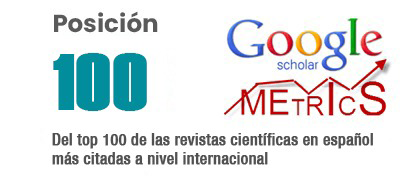Attitudinal barriers and structural in the learning process in university students with disabilities
DOI:
https://doi.org/10.62452/g29ve455Keywords:
People with disabilities, attitudinal barriers, structural barriers, Higher Education, inclusionAbstract
The objective was to study, from a qualitative approach, attitudinal barriers and structural, which are present in the educational process of students with visual, auditory and motor disabilities at the Popular University of La Chontalpa. The identified attitudinal barriers are observed attitudes and negative behaviors, which they face to carry out administrative procedures by administrative staff, there is a lack of the necessary information to carry out the procedures accompanied by a design of the curricula, which is not adequate to serve students with disabilities. In addition, structural barriers were identified, consisting of the articulation between the educational model; institutional procedures; the lack of media; lack of coordination between the departments, with the tutorials, the granting of scholarships and supports; in the inclusion in cultural, sports or scientific activities, in school hours and in the attention services.
Downloads
References
Álvarez, P. (2012). Tutoría universitaria inclusiva. Guía de buenas prácticas para la orientación de estudiantes con necesidades educativas específicas. Narcea.
Aponte, E. (2015). Gobierno y Responsabilidad Social Universitaria en las Américas y El Caribe: tendencias y desafíos. En, E., Aponte (ed.), La Responsabilidad Social de las Universidades: implicaciones para la América Latina y El Caribe. UNESCO-IESALC.
Booth, T., & Ainscow, M. (2015). Guía para la Educación Inclusiva: Desarrollando el aprendizaje y la participación en los centros escolares. Organización de Estados Iberoamericanos para la Educación, la Ciencia y la Cultura.
Borland, J., & James, S. (1999). The Learning Experience of Students with Disabilities in Higher Education. A case study of a UK university. Journal Disability & Society, 14, 85-101.
Chisvert, M. J., Ros, A., & Horcas, V. (2013). A propósito de la inclusión educativa. Una mirada ampliada de lo escolar. Octaedro.
Echeita, G. (2008). Inclusión y exclusión educativa. Revista Electrónica Iberoamericana sobre Calidad, Eficacia y Cambio en Educación, 6(2), 9-18.
Escribano, A., & Martínez, A. (2016). Inclusión educativa y profesorado inclusivo. Aprender juntos para aprender a vivir juntos. Narcea.
French, S. (2017). Disabled peopled and employment. A study of the working lives of the visually impaired physiotherapists. Routledge.
México. Asociación Nacional de Universidades e Instituciones de Educación Superior (2002). Manual para la Integración de Personas con Discapacidad en las Instituciones de Educación Superior. ANUIES. https://sid.usal.es/libros/discapacidad/9062/8-1/manual-para-la-integracion-de-personas-con-discapacidad-en-las-instituciones-de-educacion-superior.aspx
Organización de las Naciones Unidas para la Educación, la Ciencia y la Cultura. (2008). La educación inclusiva: el camino hacia el futuro. Conferencia Internacional de Educación. 48 reunión. UNESCO. https://unesdoc.unesco.org/ark:/48223/pf0000162787_spa
Organización de las Naciones Unidas para la Educación, la Ciencia y la Cultura. (1994). Conferencia Mundial sobre Necesidades Educativas Especiales: Acceso y Calidad. UNESCO. https://unesdoc.unesco.org/ark:/48223/pf0000098427_spa
Organización de las Naciones Unidas para la Educación, la Ciencia y la Cultura. (2005). Guidelines for inclusion: Ensuring Acces to education for all. UNESCO. http://www.ungei.org/resources/files/Equity_and_Inclusion_Guide.pdf
Organización de las Naciones Unidas para la Educación, la Ciencia y la Cultura. (1998). Declaración Mundial sobre la Educación Superior en el siglo XXI. UNESCO. https://unesdoc.unesco.org/ark:/48223/pf0000113878_spa
Organización de las Naciones Unidas para la Educación, la Ciencia y la Cultura. (2004). Temario abierto sobre educación inclusiva Materiales de Apoyo para Responsables de Políticas Educativas. UNESCO. https://unesdoc.unesco.org/ark:/48223/pf0000125237_spa
Organización de Naciones Unidas. (2006). Convención sobre los Derechos de las Personas con Discapacidad y el Protocolo Facultativo. https://www.un.org/esa/socdev/enable/documents/tccconvs.pdf
Pérez, J. (2016). La inclusión de las personas con discapacidad en la Educación Superior en México. Revista Electrónica de Educación Sinéctica, 46, 1-15.
Pérez, J. (2017). Políticas de equidad (o inequidad) para los estudiantes con discapacidad en la Educación Superior. (Ponencia). XXXI Congreso Alas Uruguay”. Montevideo, Uruguay.
Sánchez, M., & García, R. (2013). Diversidad e inclusión educativa. Aspectos didácticos y organizativos. Catarata.
Toscano de la Torre, B.A., Ponce Gallegos, J.C., Flores Crespo, P.A., Contreras, G., & Pérez Arriaga, J. C. (2017). Análisis de la inclusión en la Educación Superior en México. Una propuesta de indicadores para los organismos acreditadores. Tecnología Educativa Revista CONAIC, 4(2), 35-51.
Downloads
Published
Issue
Section
License
Copyright (c) 2020 Elveri Figueroa Escudero, Maricela Zúñiga Rodríguez (Autor/a)

This work is licensed under a Creative Commons Attribution-NonCommercial-ShareAlike 4.0 International License.
Authors who publish in Revista Metropolitana de Ciencias Aplicadas (REMCA), agree to the following terms:
1. Copyright
Authors retain unrestricted copyright to their work. Authors grant the journal the right of first publication. To this end, they assign the journal non-exclusive exploitation rights (reproduction, distribution, public communication, and transformation). Authors may enter into additional agreements for the non-exclusive distribution of the version of the work published in the journal, provided that acknowledgment of its initial publication in this journal is given.
© The authors.
2. License
The articles are published in the journal under the Creative Commons Attribution-NonCommercial-ShareAlike 4.0 International License (CC BY-NC-SA 4.0). The terms can be found at: https://creativecommons.org/licenses/by-nc-sa/4.0/deed.en
This license allows:
- Sharing: Copying and redistributing the material in any medium or format.
- Adapting: Remixing, transforming, and building upon the material.
Under the following terms:
- Attribution: You must give appropriate credit, provide a link to the license, and indicate if any changes were made. You may do this in any reasonable manner, but not in any way that suggests the licensor endorses or sponsors your use.
- NonCommercial: You may not use the material for commercial purposes.
- ShareAlike: If you remix, transform, or build upon the material, you must distribute your creation under the same license as the original work.
There are no additional restrictions. You may not apply legal terms or technological measures that legally restrict others from doing anything the license permits.




